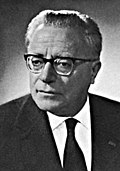
Back Eleiciones xenerales d'Italia de 1963 AST Eleccions legislatives italianes de 1963 Catalan Parlamentswahlen in Italien 1963 German Elecciones generales de Italia de 1963 Spanish Élections parlementaires italiennes de 1963 French Elezioni politiche in Italia del 1963 Italian 1963年イタリア総選挙 Japanese Eleições legislativas na Itália em 1963 Portuguese Alegeri legislative în Italia, 1963 Romanian Парламентские выборы в Италии (1963) Russian
| |||||||||||||||||||||||||||||||||||||||||||||||||||||||||||||||||||||||||||||||||||||||||||||
All 630 seats in the Chamber of Deputies 316 seats needed for a majority All 315 elective seats in the Senate 161 seats needed for a majority[a] | |||||||||||||||||||||||||||||||||||||||||||||||||||||||||||||||||||||||||||||||||||||||||||||
|---|---|---|---|---|---|---|---|---|---|---|---|---|---|---|---|---|---|---|---|---|---|---|---|---|---|---|---|---|---|---|---|---|---|---|---|---|---|---|---|---|---|---|---|---|---|---|---|---|---|---|---|---|---|---|---|---|---|---|---|---|---|---|---|---|---|---|---|---|---|---|---|---|---|---|---|---|---|---|---|---|---|---|---|---|---|---|---|---|---|---|---|---|---|
| Registered | 34,199,184 (C) · 31,019,23 (S) | ||||||||||||||||||||||||||||||||||||||||||||||||||||||||||||||||||||||||||||||||||||||||||||
| Turnout | 31,766,009 (C) · 92.9% ( 28,872,052 (S) · 93.1% ( | ||||||||||||||||||||||||||||||||||||||||||||||||||||||||||||||||||||||||||||||||||||||||||||
| |||||||||||||||||||||||||||||||||||||||||||||||||||||||||||||||||||||||||||||||||||||||||||||
| |||||||||||||||||||||||||||||||||||||||||||||||||||||||||||||||||||||||||||||||||||||||||||||
The 1963 Italian general election was held on Sunday April 28.[1] It was the first election with a fixed number of MPs to be elected, as decided by the second Constitutional Reform in February 1963.[2] It was also the first election which saw the Secretary of Christian Democracy to refuse the office of Prime Minister after the vote, at least for six months, preferring to provisionally maintain his more influent post at the head of the party: this fact confirmed the transformation of Italian political system into a particracy, the secretaries of the parties having become more powerful than the Parliament and the Government.[3]
Cite error: There are <ref group=lower-alpha> tags or {{efn}} templates on this page, but the references will not show without a {{reflist|group=lower-alpha}} template or {{notelist}} template (see the help page).
- ^ Dieter Nohlen & Philip Stöver (2010) Elections in Europe: A data handbook, p1048 ISBN 978-3-8329-5609-7
- ^ Constitutional Reform number 2 decided a fixed number of 630 member for the House, under the example of the British House of Commons during that period, and of 315 for the Senate, with a minimum of seven senators for each region excluding Aosta Valley and, later, Molise. This reform is still in force.
- ^ Italian electors effectively lost any chance to decide their Prime Minister until the majoritarian reform of 1993.







